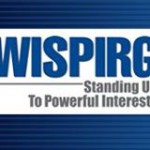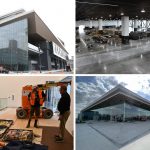Coalition Unveils Better Solution for I-94 East-West Corridor
WISDOT’s Preferred Options Poorly Outlined, Costly, Wasteful, and Require Higher Taxes, Fees
MILWAUKEE – Two weeks after WISDOT issued a draft Environmental Impact Statement (DEIS) that proposes two costly and wasteful highway expansion options for the I-94 East-West corridor – a coalition is offering a new alternative aimed at enabling 21st century mobility in the corridor and developed by a 25-year transportation planner and NJ DOT veteran.
The new option proposes returning the highway to a state of good repair and safe and reliable operation without expansion, but, instead of highway expansion, includes a high quality rapid-transit system that is more in touch with the changing desires of people to get around via non-driving modes. The proposal would enhance economic development, better connect people to jobs in the region, and support local communities.
“With the publication of its Draft Environmental Impact Statement, WISDOT has taken another big step forward in its drive to widen I-94 in Milwaukee’s East-West Corridor,” said Dr. Mark Stout, author of the alternative and former Assistant Commissioner for Planning and Development at the New Jersey DOT. “They have dismissed, rather peremptorily, other options for Milwaukee’s future. I want to show that other options are not only feasible, but in fact a better choice for the East-West Corridor.”
The study includes a detailed concept plan for creating an East-West transit system along the I-94 corridor, with potential for major economic development around Miller Park. The system would link the Burleigh and 101st St. Park-and-Rides to the downtown Milwaukee Streetcar, the Intermodal Station, and other locations, with several cross-town connections via the ballpark.
WISDOT has put forward only two options for the corridor; both call for highway expansion, and are based on questionable predictions of increasing traffic volumes along the Corridor – predictions not borne out by WISDOT’s own traffic data. In fact, the DEIS disregards data showing that traffic volumes in the corridor are declining and which call into question the need for expanding the interstate. A 2014 1000 Friends of Wisconsin report found that traffic counts on this stretch of highway decreased 8 percent from 2000-2012.
Examining expansion alone is particularly shortsighted given Wisconsin’s changing demographics – an aging population that will outlive its ability to drive, as well as Millennials’ shrinking reliance on cars for travel – and the local need for driving alternatives to reach jobs and commerce in the region.
The DEIS also fails to review options that would simply repair the road without expansion, and altogether refuses to consider better transit service despite growing demand for non-driving alternatives in the region.
Dr. Stout doesn’t only fault WISDOT for neglecting transit in its DEIS; the Department also failed to adequately study pavement conditions and crash data before concluding that an expansion of I-94 was necessary. “The DEIS does a poor job of identifying and describing the safety problems that WISDOT apparently feels should be addressed. The mere fact of higher crash rates does not automatically identify problems or solutions,” notes Stout. Ultimately, Stout embraces a repair option because “WISDOT concedes that most of the infrastructure, safety, and operational issues they identify on the highway can be successfully addressed under either the Spot Improvements Option or the Six-Lane Modernization Option.”
“Proposing to spend $1 billion taxpayer dollars on a project that is out of touch with how people are increasingly getting around is bad enough, but not adequately addressing the need for this massive investment is unacceptable. Any reasonable taxpayer should reject both options put forward by WISDOT,” said Bruce Speight, WISPIRG Director.
To finance these proposals, WISDOT Secretary Gottlieb has recommended raising taxes, including the gas tax, a diesel tax, a fee on hybrid owners and a fee on the purchase of new vehicles. He also wants to borrow more than $800 million in the next two-year budget.
“Governor Walker and WISDOT Secretary Gottlieb are proposing to build more boondoggles, and the DOT is asking us to pay for it with more taxes and fees,” concluded Speight. “Rather than squander billions of tax dollars on overbuilding highways, WISDOT should be offering a vision for transportation that will help strengthen communities, connect people to jobs, and better accommodate changing local needs. They aren’t doing it, so we have to do it for them.”
Dr. Stout’s report is available at http://wispirg.org/reports/wip/rehab-transit-option.
The Coalition for More Responsible Transportation was formed to challenge the overbuilding of highways in Wisconsin while our local roads and transit systems suffer. www.facebook.com/CMRTWI.
NOTE: This press release was submitted to Urban Milwaukee and was not written by an Urban Milwaukee writer. It has not been verified for its accuracy or completeness.
More about the I-94 East-West Expansion
- ‘Fix at Six’ Group Wants I-94 Expansion Delayed For Civil Rights Report - Jeramey Jannene - Mar 20th, 2024
- Coalition Admonishes I-94 expansion Record of Decision - Sierra Club - Mar 20th, 2024
- Feds Approve Interstate 94 Expansion - Jeramey Jannene - Mar 8th, 2024
- Advocates condemn approval of I-94 expansion - Sierra Club - Mar 8th, 2024
- I-94 East-West Project Receives Federal Approval - Wisconsin Department of Transportation - Mar 8th, 2024
- Federal Government Investigating Civil Rights Complaint About I-94 Expansion - Evan Casey - Jan 11th, 2024
- Op Ed: 8-Lane I-94 Expansion Is Worst for Carbon Emissions - Cassie Steiner, Cheryl Nenn and Terry Wiggins - Dec 18th, 2023
- Residents Concerned I-94 Widening Would Increase Flooding In Nearby Neighborhoods - Jonah Chester - Aug 10th, 2023
- Eyes on Milwaukee: I-94 Expansion Public Comment Deadline Extended - Jeramey Jannene - Jan 6th, 2023
- I-94 East-West study public comment period extended to January 31, 2023 - Wisconsin Department of Transportation - Jan 3rd, 2023
Read more about I-94 East-West Expansion here
Mentioned in This Press Release
Recent Press Releases by WISPIRG Foundation
Wisconsin leaders fail to ensure safe election during COVID-19
Apr 7th, 2020 by WISPIRG FoundationVoters shouldn’t have to choose between their health and democracy
Trouble in Toyland shows how to protect kids from unsafe toys still for sale
Nov 21st, 2019 by WISPIRG FoundationReport identifies most common dangers, calls for government action


















Such a good idea. Wish more people were open minded to transit solutions such as this.
Note that you could use equipment such as Alstom’s Citadis Spirit LRV – which is 100% low floor, capable of 65 MPH, and can be expanded to take 340 passengers. Each train could effectively take a lanes worth of traffic per trip, give 1.5 passengers per car – with a density of 40 cars per mile – each train could eliminate 6.5 miles of lane traffic.
https://www.youtube.com/watch?v=ZglqfAZKt0I
that is why Walker stopped the new train to Madison. He Idoes not have a way to get money in his pocket. We lost over 500 jobs ? So much for his 250,000 new jobs. When we built 94 it had a mase transit system to Madison? They removed it to save money. They were to run side by side.
I absolutly love this because it makes so much sense and I’m sure in the long run it would be more financially prudent. Fiscal Conservative should support this all the way.
By raising taxes in these proposed areas, the WISDOT Secretary Gottlieb is basically discouraging anyone from buying a hybrid car or spending more money on a new car. That doesn’t make any sense. It’s hard enough to convince the public to spend money on a more environmentally friendly vehicle.